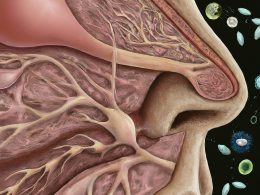In today’s world, science and policy go hand in hand. Public health decisions made by policymakers can greatly impact the well-being of individuals and communities. That’s where data comes in – it provides a necessary tool for informed decision-making. By utilizing data-driven approaches, we can ensure that public health policies are effective and efficient. In this blog post, we will explore the intersection of science and policy, focusing on how data can be used to inform public health decisions. So buckle up as we dive into the importance of data in policymaking!
The Importance of Data in Policymaking
Data is an essential component of policymaking. It provides policymakers with valuable information to make informed decisions that can have a significant impact on society. Data can be used to identify trends, patterns, and potential issues in various areas such as healthcare, education, and the environment.
Without data-driven policies, decision-making becomes subjective and less effective. Policymakers need reliable data to understand how their decisions will affect different groups within society. This is particularly important when creating public health policies that will impact the well-being of individuals and communities.
Moreover, data also enables policymakers to track progress over time which helps them determine if their policies are working effectively or not. By analyzing relevant data sets regularly, they can adjust existing policies or create new ones that address emerging challenges.
Policymaking without evidence-based research is simply guesswork – it’s like trying to hit a target in the dark. The use of data ensures that policymakers have a clear understanding of the issues at hand so they can create effective solutions for societal problems while minimizing negative consequences.
The Use of Data in Public Health
Public health is an important aspect of any community, and data plays a significant role in shaping public health policies. Public health professionals collect various types of data to understand the spread of disease, determine risk factors that contribute to poor health outcomes, and identify trends that may require intervention. This data-driven approach helps policymakers make informed decisions about how best to allocate resources for public health interventions.
One way data is used in public health is through surveillance systems. These systems collect information on diseases and their progression over time. For example, during a pandemic like COVID-19, surveillance systems track the number of cases reported daily or weekly, which allows officials to understand the rate at which the virus is spreading within a population.
Data also helps researchers identify disparities in healthcare access and quality among different populations. By analyzing demographic information alongside clinical data such as diagnoses and treatments received by patients from different backgrounds, researchers can pinpoint areas where improved access could lead to better outcomes for those groups.
In addition to tracking disease outbreaks and identifying healthcare disparities, data analysis can help predict future disease outbreaks or epidemics. Using modeling techniques based on previous patterns of illness spread or emerging pathogens detected early in global monitoring networks provides early warning signs so authorities can act quickly before situations become severe.
Using data effectively has been shown time and again to be critical when it comes to improving public health outcomes; it enables policymakers not only with accurate insight into what’s happening but also predictive power about potential threats down the line – all while being able to more intelligently target initiatives towards vulnerable populations who need them most!
How to Use Data to Inform Public Health Decisions
When it comes to public health decision-making, data is crucial. But how do we use this data effectively? Firstly, it’s important to collect accurate and comprehensive information that is relevant to the issue at hand. This can come from various sources such as surveys, medical records, and epidemiological studies.
Once the data has been collected, it needs to be analyzed thoroughly. This involves looking for patterns and trends in the information which can aid in identifying potential causes of health issues or determining effective solutions.
It’s also essential to consider any limitations or biases present in the data. For example, certain demographics may be underrepresented in surveys leading to incomplete results. These factors need to be taken into account when making decisions based on the gathered data.
The next step is using this analyzed information to make informed policy decisions that benefit public health outcomes. It’s crucial that policymakers understand and interpret what the data is saying before they take action.
Monitoring and evaluating implemented policies are an integral part of using data effectively for public health decision-making. By analyzing outcomes post-policy implementation, policymakers can determine its effectiveness and adjust accordingly if necessary.
Utilizing accurate and comprehensive data is a critical aspect of successful policy-making within public health sectors – but so too are interpreting results correctly along with consistently monitoring their impact over time..
The Impact of Data on Public Health
Data has had a significant impact on public health, allowing researchers and policymakers to make informed decisions regarding population health. By analyzing data related to disease prevalence, treatment outcomes, environmental factors and social determinants of health, public health officials can better understand the root causes of poor health outcomes.
This information is then used to develop targeted interventions aimed at reducing risk factors for specific populations or communities. For example, by examining data on lung cancer rates in regions with high levels of air pollution, policymakers can work towards implementing policies that reduce exposure to harmful contaminants.
Data also plays an important role in disease surveillance efforts. Through the collection and analysis of data from healthcare providers and other sources such as social media trends or wastewater testing results – public health officials are able to detect outbreaks early on before they have a chance to spread widely. This allows them to implement appropriate control measures quickly like contact tracing or quarantine protocols.
Moreover, access to accurate and timely data is critical when it comes to emergency preparedness planning. During pandemics or natural disasters such as hurricanes or wildfires – decision-makers rely heavily on real-time information about infection rates, hospital capacity and resource availability so that resources can be distributed accordingly.
Without reliable data informing their decisions – public health officials would not be able effectively address the complex challenges facing our societies today around infectious diseases outbreaks; chronic conditions; injuries & violence prevention; mental illness issues among others.. Therefore it’s crucial that we continue improving our ability collect more accurate & relevant data through innovative technologies while ensuring privacy rights protections for individuals involved in these processes!
Conclusion
The intersection of science and policy is crucial for public health decision-making. Data plays a vital role in informing policymakers about the most effective interventions to improve population health outcomes. Through scientific research and data analysis, we can better understand the impact of public policies on health disparities and develop evidence-based solutions to address them.
It is essential that we continue to prioritize collecting accurate data and using it effectively in policymaking processes. With advancements in technology, we now have more opportunities than ever before to collect detailed information on various aspects of healthcare systems and individual patient outcomes.
By leveraging these tools and applying them effectively, policymakers can make informed decisions about how best to allocate resources while ensuring equitable access to care for all populations. Ultimately, by continuing our efforts at this critical intersection between science and policy, we can help build healthier communities through better public health decision-making processes based on robust data analysis.












